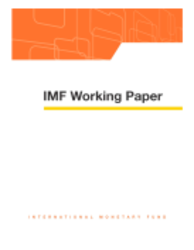
Setting Up a Treasury in Economies in Transition
The primary mandate of a national Treasury is to promote an optimal financial management of government resources, by ensuring that spending agencies are provided, in a timely manner, the resources needed for a smooth provision of public services, while minimizing the cost of government financing. However, international experience shows that agencies that go by the same name (the Treasury) assume a variety of responsibilities within the gamut of functions encompassed by government financial management. This paper argues that, in countries facing substantial economic and financial adjustment problems and/or rapid institutional change, it is desirable to give the Treasury a broader (rather than narrower) range of responsibilities in government financial management. This is typically the case in economies in transition, in which under central planning Treasury functions were dispersed among different agencies, including the Central Bank. The paper presents an overview of the main issues governments are likely to face in setting up a national Treasury, in particular in economies in transition. It begins with an analysis of the main Treasury functions. It then discusses the Treasury's basic organization and structure, information system, and relationships with other public entities.
Publication date: February 1995
ISBN: 9781451843347
$15.00
Add to Cart by clicking price of the language and format you'd like to purchase
Available Languages and Formats
| English |
Prices in red indicate formats that are not yet available but are forthcoming.
Topics covered in this book
This title contains information about the following subjects.
Click on a subject if you would like to see other titles with the same subjects.
Public Finance , International - Economics , central bank , government debt , budget execution , debt management , financial management
Summary
Copyright © 2010 - 2025
Powered by:
AIDC



